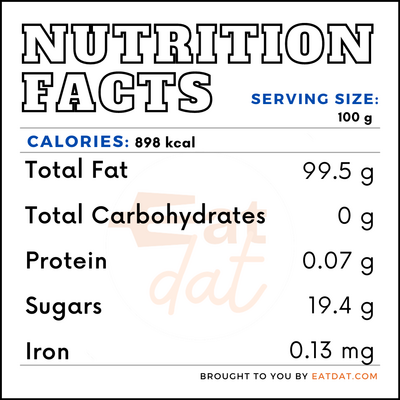
Bacon
What is Bacon?
Bacon is salt-cured meat, prepared from various cuts of pork. It is most commonly made from pork belly or back. Bacon can be eaten on its own, as a side dish, or as an ingredient in different recipes. It is usually made by brining and then either cold or hot smoking before being sliced.
- Once sliced, it can then be cooked in different ways.
- There are different types of bacon such as American bacon, Canadian bacon, Irish bacon, slab bacon, pancetta, and rashers.
The top 10 most popular bacon brands are:
- Vande Rose Farms Artisan Dry Cured Applewood Smoked
- Trader Joe’s Uncured Apple Smoked
- D’Artagnan Uncured Applewood Smoked
- Tender Belly Dry Cured
- Applegate Farms Hickory Smoked Uncured
- Trader Joe’s Classic Sliced Dry Rubbed All Natural Uncured
- Niman Ranch Applewood Smoked Uncured
- D’Artagnan Uncured Hickory Smoked
- Hormel Original Black Label
- Oscar Mayer Naturally Hardwood Smoked
Origin of bacon
The ancient Chinese first salt-preserved pork meat around 4,900 BC. By Roman times, curing pork had already become a well-established practice and Cato the Elder wrote about salting this meat. Some historians believe that Marco Polo brought the recipe for this meat back to Italy from his travels. Until the 16th century, bacon referred to all types of pork meat. Christopher Columbus is believed to have taken eight pigs with him to the Americas, while Hernando de Soto took thirteen, thereby transporting this meat to the New World. Today, this is one of the most highly consumed meats across the globe.
Nutrition
A 100g serving of bacon can contain:

This food is full of protein and essential amino acids. It also has key vitamins such as vitamin A and choline, as well as omega-3 and omega-6 fatty acids. Additionally, it provides other nutrients including magnesium, phosphorus, potassium, sodium, zinc, copper, and selenium.
It is considered processed meat and the curing and smoking processes that it undergoes can lead to health hazards. Curing involves the use of nitrate, which increases the risk of colorectal cancer. Smoking meat can generate carcinogenic polycyclic aromatic hydrocarbon (PAH). Consumption of processed meats such as this may also lead to higher risk of coronary heart diseases and diabetes. It is advised to limit the consumption of processed meats and switch to fresh lean meats instead.
Commercial production
While the traditional method for making this was the dry curing method, most products made today are wet cured. Dry curing involves rubbing salt on cuts of meat and leaving them to cure over a week or two. Wet curing involves making a brine of salt, sugar, sodium nitrite, and other chemicals or seasonings. First, the meat is injected with the brine. Then, the cured meat is smoked for enhanced flavor and preservation. Instead of smoking, some suppliers put the cured meat in a convection oven. However, the dry-curing method retains more flavor than the industrial curing method.
To maintain this meat’s flavor, it’s vital to store it properly. Unopened packages can be kept in the refrigerator for up to a week past the expiration date. These packages can be stored frozen for about one month. Once opened, use the bacon within one week. Cooked bacon can also be frozen and stored in the refrigerator.
Bacon recipes
This meat is flavorful and can be used in a variety of dishes. Here are a few popular recipes:
- Spaghetti Carbonara
- Crispy Cheese and Potatoes
- Cheeseburger Pie
- Cheesy Bacon and Egg Hash
- Cajun Spiced Turkey
- Green Beans
- Bombay Curry
- Malaysian Fried Porridge
- Parmesan Gougeres
- Okonomiyaki
- Fried Rice
- Parantha
- Wrapped Braaibroodjie
- Black Eyed Peas
- Peru Com
FDA regulations
The USDA regulates all meat products and defines this meat as the cured belly of a swine (hog) carcass. If meat from other parts of the body are used, it must be specified on the packaging. This food is considered red meat. Hormones are prohibited in raising hogs. All pork products are graded based on quality and cleanliness.
References
Jon Jakoblich, The Ultimate Guide to Bacon, Bacon Scouts
https://www.baconscouts.com/bacon-facts/bacon-history/
Santarelli, Raphaëlle L et al. “Processed meat and colorectal cancer: a review of epidemiologic and experimental evidence.” Nutrition and cancer vol. 60,2 (2008): 131-44. doi:10.1080/01635580701684872, https://www.ncbi.nlm.nih.gov/pmc/articles/PMC2661797/
Murphy, Karen J et al. “Effects of eating fresh lean pork on cardiometabolic health parameters.” Nutrients vol. 4,7 (2012): 711-23. doi:10.3390/nu4070711, https://www.ncbi.nlm.nih.gov/pmc/articles/PMC3407990/
